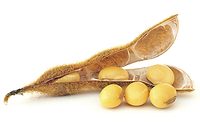A variety of products and industries use diacids, which are a non-toxic, versatile class of chemical intermediates. Uses include monomers for engineering polymers such as polyesters, polyamides, polyurethanes and hot-melt adhesives; crosslinking agents; surfactants; lubricants and additives such as grease and corrosion inhibitors; food additives; solvents and cleaning additives; personal care; plasticizers; and fine chemicals such as fragrances, insecticides and fungicides. The choice of diacid is driven by the properties of the product, which can be imparted by the length of the diacid.
Powder coatings are free-flowing micronized particles that are applied in fluidized bed reactors or electrostatically sprayed onto metal or conductive surfaces. The resulting powders are then melted and oven cured to form very hard, high-gloss surfaces. Powder coating has major advantages over other coating techniques in that thin films (30-40 um) can be made at relatively low temperatures (150 °C) with no solvent. This results in a coating process that has inherently zero VOCs. Although a number of different resin chemistries are used for powder coatings, glycidyl methacrylate acrylic (GMA) powder coatings are known for their high gloss, durability and abrasion resistance. They are, therefore, frequently the resin systems of choice for high-performance applications.
GMA resins have very high epoxide functionality (up to 60 equivalents) and are typically crosslinked with diacids such as dodecanedioic acid (C12). The C12 diacid is added in stoichiometric amounts into the formulation, micronized into particles, sprayed and thermally cured to form a hard, glossy surface. The resulting coatings have excellent solvent resistance to common organic solvents such as MEK, good weather resistance, high gloss and excellent adhesion to metals. As a result, these materials are suitable for many high-performance outdoor applications such as automotive clearcoats, coatings for aluminum wheels, appliances and outdoor furniture. A disadvantage of GMA resins is that they can be brittle due to the high crosslink density.
While C12 diacid is currently the most commonly used crosslinker in GMA powder formulations, C18 diacid has the potential to improve flexibility and impact resistance of the resulting coating due to the longer, more elastic C18 methylene chain. It is important to note that C18 diacid [octadecanedioic acid (ODDA)] has a melting point of 124 °C compared to 128 °C for C12 Diacid and, therefore, can be dropped into existing production lines with virtually no process changes.1
Inherent™ C18 Diacid is a long-chain diacid that is now commercially available from two pathways, one using microbial fermentation and one using metathesis of natural oils.2 The latter pathway is expected to dramatically increase the availability of C18 diacid and lower its cost. The products made from this diacid typically show superior properties, such as water and chemical resistance, as compared to the shorter-chain alternatives.
Figure 1 shows a chart of the impact resistance3 of powder coatings crosslinked with C18 diacid (added in stoichiometric amounts) compared to the same resins crosslinked with C12 diacid. For both types of GMA resin formulations (1 and 2), the systems crosslinked with C18 have two times the impact resistance of systems crosslinked with C12. Furthermore, the formulations with C18 diacid, when coated on metal test panels, show high gloss, durability, solvent resistance and good adhesion to the panels. These attributes make them attractive candidates for applications requiring higher impact and flexibility than can be obtained from C12 diacid.
Summary
When Inherent™ C18 Diacid is used as the system crosslinker in GMA powder coatings, the resultant coating has twice the impact resistance as that of the incumbent diacid.
References
1 Data obtained from the Kirk-Othmer Encyclopedia of Chemical Technology, Dicarboxylic Acids, DOI: 10.1002/0471238961.0409030110150814.a01.pub2.
2 Abraham, T.; Kaido, H.; Lee, C. W.; Pederson, R. L.; Schrodi, Y.; Tupy, J. U.S. Patent Application 2009/0264672.
3 Correspondence with Szuping Lu, Anderson Development Company.
For additional information, visit www.elevance.com, or contact Ron Calloway at Inherent-diacids@elevance.com.





Report Abusive Comment